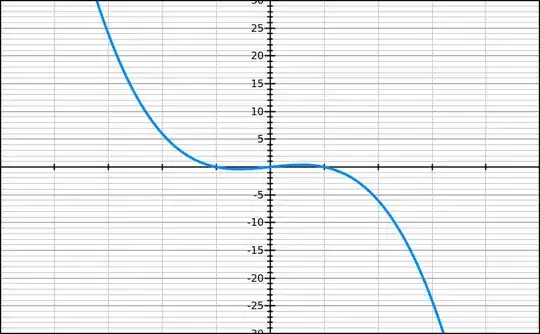Find a positive initial guess $x_0$ for the positive zero of $x−x^3=0$ for which Newton's method gives an undefined quantity for $x_1$.
Find a positive initial guess x0 for the zero of $x−x^3=0$ for which Newton's method bounces back and forth infinitely. (Use symmetry.)
Find the largest interval around each of the roots $x−x^3=0$ such that Newton's method converges to that root for every initial guess $x_0$ in that interval. (Use your previous two answers here.)
Interval converging to $x=−1$
Interval converging to $x=0$
Interval converging to $x=1$

so, my graph will look like that. (x is between -5 and 5)
I don't really know how to start. If i get $x_0$ as $1$ or $0$ I will get the same result for every $x$ with Newton's method. Cause this numbers are my roots, what should i take as $x_0$, if I already know the roots. I can't get it.
thanks in advance.